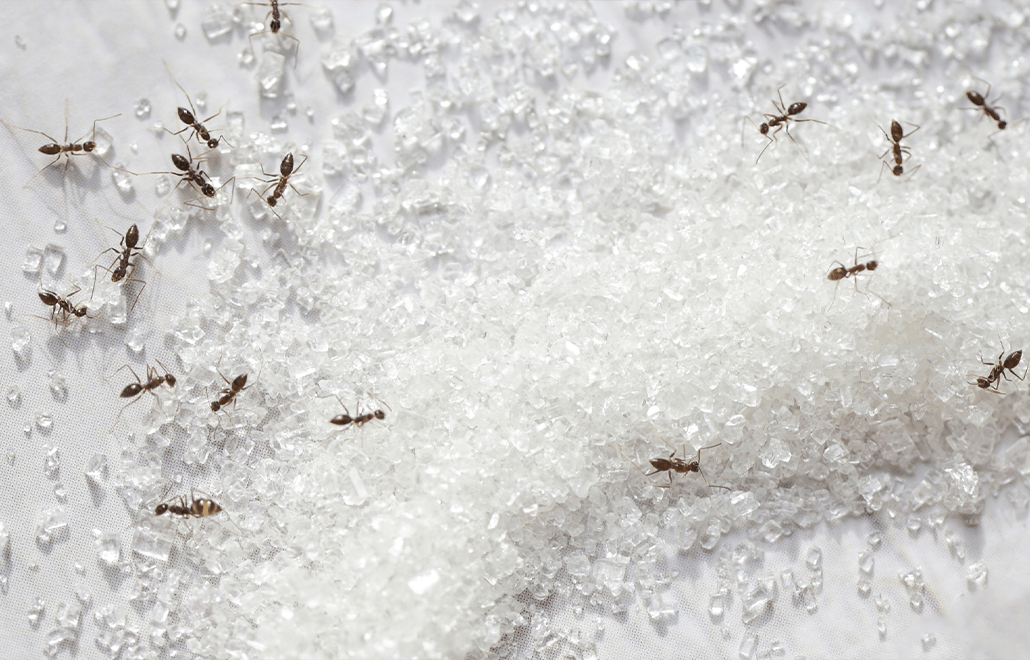
22 Apr Why Are Sugar Ants In My Home?
Picture this: You’re preparing your morning coffee, and as you reach for the sugar jar, you notice a line of tiny ants marching across your kitchen counter. Sound familiar? You’re not alone. Sugar ants, also known as odorous house ants, are a common household pest that can quickly become a nuisance. In this blog post, we’ll explore the reasons why sugar ants might be invading your home and what you can do to prevent and eliminate them.
- Seeking Food and Water:
Like most pests, sugar ants are drawn to food sources, particularly sweet and sugary substances. They have an excellent sense of smell and can detect even the smallest traces of food in your home. Crumbs on the counter, spills, and unsealed food containers are all attractive targets for these hungry insects. Additionally, sugar ants also require water to survive, so they may be attracted to leaky pipes, dripping faucets, or even pet water bowls. - Warmth and Shelter:
As temperatures drop during the cooler months, sugar ants seek out warm, sheltered areas to nest and reproduce. Your cozy home provides the perfect refuge for these tiny invaders, offering protection from the elements and easy access to food and water. They often build their nests in wall voids, under floors, or around plumbing fixtures, making them difficult to detect and eradicate. - Scent Trails:
Sugar ants communicate with each other using chemical signals called pheromones. When a scout ant discovers a food source, it leaves behind a trail of pheromones to lead other colony members to the location. These scent trails can persist for long periods, attracting more ants to your home and creating a persistent infestation. Even after you’ve cleaned up spills and crumbs, the lingering pheromones may continue to draw ants inside. - Outdoor Conditions:
While sugar ants are primarily an indoor pest, they may also venture indoors in search of food and shelter during periods of extreme weather or environmental stress. Factors such as heavy rainfall, drought, or disturbances to their outdoor habitat can drive ants indoors in search of better conditions. Once inside, they may establish satellite colonies to expand their territory and increase their chances of survival.
Dealing with a sugar ant infestation can be frustrating, but understanding why these pests are drawn to your home is the first step towards effective prevention and control. By eliminating food and water sources, sealing entry points, and addressing conducive conditions, you can make your home less attractive to sugar ants and reduce the likelihood of future infestations. If you’re struggling to manage a sugar ant problem, don’t hesitate to contact Proctor Pest Control for professional assistance. Our experienced technicians can identify the source of the infestation and implement targeted treatments to eliminate sugar ants and keep them from returning.



